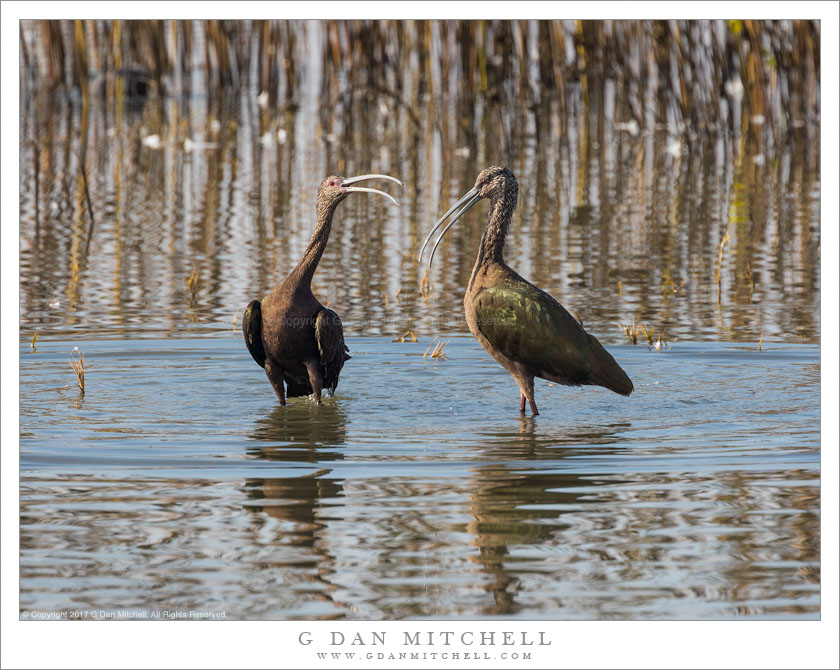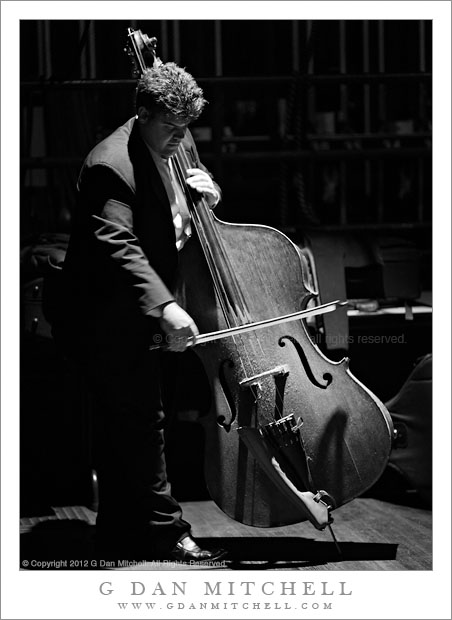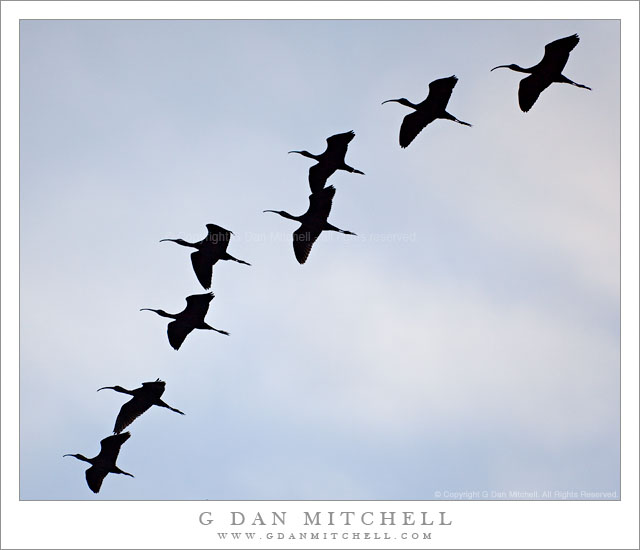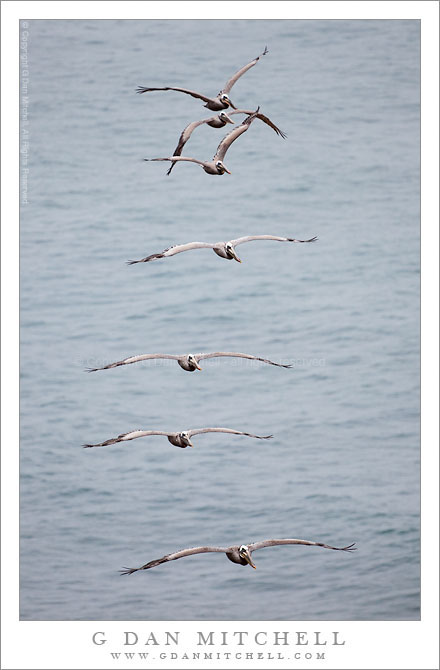Two White-Faced Ibises. © Copyright 2017 G Dan Mitchell – all rights reserved.
Two white-faced ibises interacting in a San Joaquin Valley wetland pond
The white-faced ibises have intrigued me since before I knew what they were — in fact, I suppose I could say that I photographed them before I realized that they existed. Some years back, on my very first more or less accidental exposure to bird photography, I found myself “out there” on an early morning, with no more clue about what was going on than “someone told me I should go here and see the birds.”(That someone was a colleague where I taught.) I barely knew a goose from a swan, at least when they were flying quickly overhead, but I was amazed by the number and variety of birds that morning. I photographed like a madman, not really knowing at all what I was photographing. Later on, back home and looking at files, I recall finding a series of photographs of a line of birds overhead that had oddly long and curving beaks. I wondered what they were. It turns out they were ibises.
Ibises are not always the most common specimens. In addition to their unusual beaks, they have another particular visual characteristic. In many situations you would regard them as dark and fairly drab-looking birds. Photographing them in flight is often difficult, partly because they frequently just end up looking black against any lighter background. But catch them in the right light and the texture, patterns, and colors of their feathers begin to appear. On this morning I happened upon a group of ibises, perhaps a couple dozen, in shallow water. I stopped and watched quietly and was able to photograph a variety of behaviors, including this interaction between two of the birds.
G Dan Mitchell is a California photographer and visual opportunist. His book, “California’s Fall Color: A Photographer’s Guide to Autumn in the Sierra” is available from Heyday Books and Amazon.
Blog | About | Flickr | Twitter | Facebook | Google+ | LinkedIn | Email
All media © Copyright G Dan Mitchell and others as indicated. Any use requires advance permission from G Dan Mitchell.






